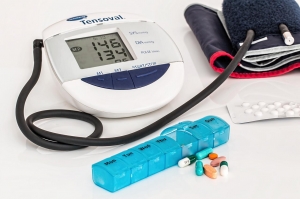Do you feel trapped by past traumas or persistent fears that hold you back?
Have you wished for a magic wand to transform painful memories into normal ones? Here's some good news: the real magic lies within your mind.
EMDR, a form of psychotherapy offers a track to healing from emotional trauma. Can a simple eye movement actually change your life? If you're tired of living in the past, let's discover the magic behind this therapy.
1. It's less stressful
EMDR, or eye movement desensitization and reprocessing, is a unique therapy. One that isn't all talk.
It sets itself apart from therapies that require individuals to painstakingly describe and relive distressing events in great detail. This process can take months or even years before any breakthroughs are made. EMDR is a different story.
Instead, EMDR has proven its ability to heal trauma in a few sessions. EMDR focuses on processing and moving past the trauma. It is particularly beneficial for therapeutic settings where individuals may already feel emotionally vulnerable.
Think of it as decluttering your mind. You're tidying up those memories that have overstayed their welcome. Once you've vacuumed and organized the guest bedroom of your mind, the chaos is gone. The old image is replaced by the cleaned-up version. There's no need to keep going back to revisit it.
2. It's more than “moving your eyes and tapping”
EMDR relies on the Adaptive Information Processing (AIP) model to understand how our brain stores memories. It accesses memories through a process called bilateral stimulation.
Bilateral stimulation “repairs” the memory using a specific sequence of rhythmic patterns that move from left to right. These are created by sounds, sights, and touch. This can involve stimuli like watching a hand or light move or auditory stimuli like listening to sounds shifting from one side to another.
3. It's efficient
EMDR doesn't waste time when it comes to healing past traumas. Its treatment is action-oriented and results-driven, avoiding endless therapy sessions. The process involves eight phases completed within eight to 12 sessions. Traumatic events can often create cycles of anxiety and suffering that can trap us.
One study discovered that individuals who experienced a single traumatic event and 77% of those who went through multiple traumas were no longer experiencing symptoms of PTSD after just six 50 minute sessions.
Similarly, another study revealed that 77% of combat veterans successfully overcame PTSD after participating in 12 therapy sessions. An impressive 84% and 90% of single-trauma victims no longer show PTSD signs after only three sessions as reported by PTSD UK.
No longer dwelling on the past becomes a thing of the past itself. This therapy assists in breaking this cycle at a much faster pace compared to traditional therapies. Just imagine how years of burden can be lifted in just a few sessions!
4. It's beneficial for various conditions
EMDR has earned its reputation as an effective intervention for PTSD. Its successful introduction has led to expanded applications and recognition as a treatment option. Mental health and addiction experts have discovered its versatility.
As a result, well-designed addiction treatment centers now incorporate EMDR into their programs. It's proven useful in managing co-occurring disorders related to substance and mental health. This is significant because 40% of people struggling with substance abuse also have co-occurring mental health conditions.
If someone resorts to drinking as self-medication for their PTSD, addressing the root cause through EMDR can reduce the urge to engage in binge drinking behavior. Recognizing the impact of alcohol withdrawal further underlines the importance of EMDR in addressing symptoms associated with substance abuse before they worsen. It's regarded as a quality indicator for treatment providers.
EMDR is an asset in addiction recovery, managing PTSD, anxiety, depression, chronic pain, bipolar disorder, and OCD (among conditions).
5. It's not a gimmick
Despite its “quick fix” appeal, EMDR is evidence-based, grounded in science. The first clinical trial in 1989 paved the way for more than 30 positive controlled outcome studies. Since 2016, over 7 million people in 130 countries have been treated successfully by 110,000 therapists.
EMDR therapy is a globally approved "best practice" for trauma relief. The most prominent authorities recognize it as a frontline treatment. Top organizations and institutions back it.
6. It's trusted and safe
A few of these prominent groups on the list include:
- The U.S. Department of Veterans Affairs & Department of Defense
- The American Psychiatric Association
- The Substance Abuse & Mental Health Services Administration (SAMHSA)
- The National Alliance on Mental Illness (NAMI)
- The World Health Organization (WHO)
- U.K. National Institute for Health and Care Excellence,
- The International Society for Traumatic Stress Studies, along with many international governments and agencies in the U.K., Australia, and Germany.
7. It encourages self-awareness
EMDR goes beyond addressing traumas. The process encourages self-awareness and introspection helping individuals gain a better understanding of their reactions, triggers, and emotional patterns.
By using taps and movements EMDR helps individuals identify what triggers these responses. This exploration opens up possibilities for growth in various aspects of their lives.
It allows room for moving beyond trauma relief and self-reflection. As people learn more about themselves they become more receptive to development and transformation.
Rewiring the mind for health and happiness
The beauty of EMDR lies in its simplicity and speed, but it is by no means a superficial or short term solution. Its effectiveness is evident in drug rehabilitation centers and clinical settings. It offers a holistic approach to transformation. EMDR is becoming a go-to option for top treatment providers.
Healing isn't an instant process; however, therapies like EMDR can make it feel as if progress happens in the blink of an eye. By unlocking the magic within the mind, EMDR therapy continues to surprise. It offers hope and tangible results to those caught in cycles of trauma and addiction.






